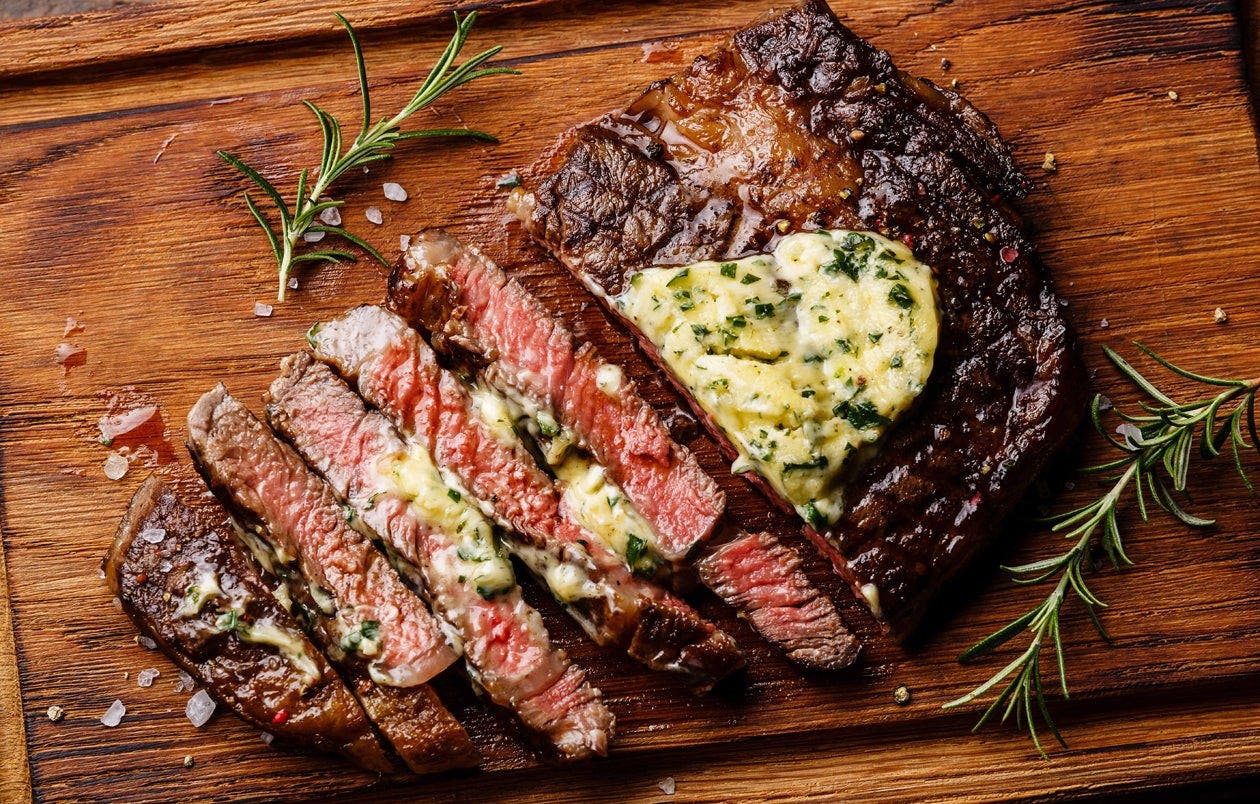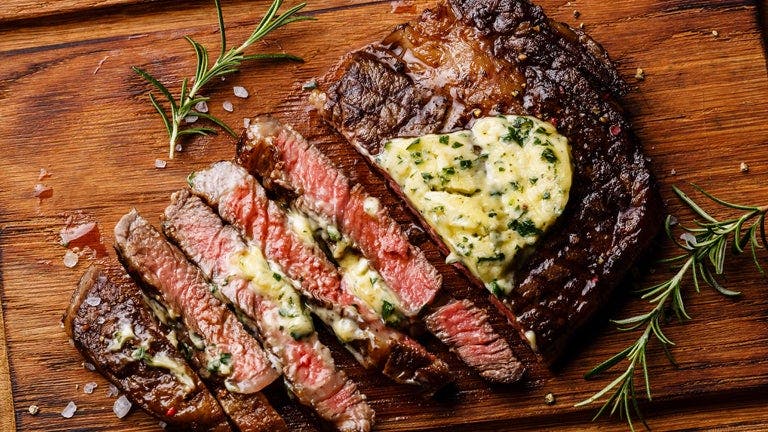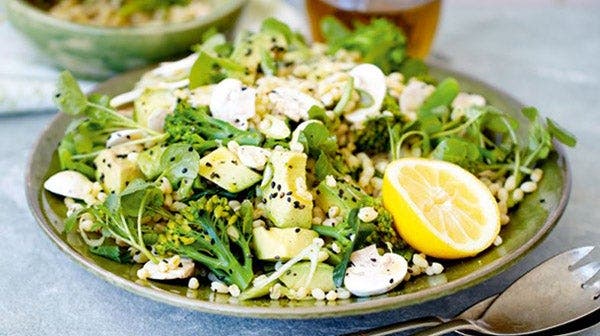What is the keto diet?


What is the keto diet?
Keto is short for what is more formally known as the ketogenic diet; essentially an ultra low carb diet. The basics of the ketogenic diet are high fat, moderate protein and very few carbohydrates. The typical ratio is 70-80 per cent fat, about 10-20 per cent protein and about 5-10 per cent carbohydrates[2].
How does the keto diet work?
So, how are you able to eat so much fat and still lose weight? The initial weight loss is attributed mostly to water loss from the acute, dramatic reduction of carbs. When you eliminate nearly an entire category of foods (in this case, carbs) you are also left with far fewer foods to eat and will therefore likely be eating less.
Second to consuming less, when you get most of your calories from fat, it forces your body into a state called ketosis, whereby your body derives its energy from ketones instead of glucose.
To understand ketosis, it’s helpful to know a bit about how your body uses energy from the foods you eat.
The cells in your body prefer to use glucose (sugars from the carbs you eat) as a source of energy[3]. When you dramatically reduce the number of carbs you consume and replace them with fats, your body goes into a state of ketosis. This means the liver begins producing ketone bodies from stored fats that will be used as a source of energy in the absence of glucose, thereby burning fat instead of carbs[4].
Whether you're eating a high or low carb diet, you're only going to lose weight when you consume fewer calories than your body burns.
FIND OUT MORE: WeightWatchers® vs the keto diet
When was the keto diet developed?
Despite all the recent buzz, keto is not new. In fact, the keto diet was first developed in the 1920s to treat epilepsy in children[5]. It is only more recently that this diet has gained popularity in the weight loss space.
What are the different types of keto diets?
As well as the standard ketogenic diet discussed in this article, there are a few variations of the keto diet that can be followed. These include:
Cyclical ketogenic diet: On the cyclical keto diet, you cycle in and out of keto. You’ll usually stay on the keto diet for five days, followed by a day or two of eating more carbs. This can be a good option if you’re having a hard time sticking to a strict standard ketogenic diet.
Targeted ketogenic diet: Some athletes choose to follow a targeted ketogenic diet. The keto diet is followed as normal, until 30-45 minutes before exercise, when 25g or so of carbs are consumed. The idea is that you’ll have just enough carbs to fuel your workout and still be able to return to ketosis easily after you cool down.
High protein ketogenic diet: This version of the keto diet involves upping the protein intake a little bit. Protein should make up about 30 per cent of calories, with the other 65 per cent coming from fat and 5 per cent from carbs. The high protein ketogenic diet is often followed by body builders.
Does keto help you lose weight?
Remember how we talked about the body preferring glucose over carbs as a source of energy? Well, the body stores a small amount of this glucose in the form of glycogen. When you start going keto, your body uses up what little stores of glycogen it has and sheds that with water[6]. Note that once you overconsume carbs, the effects are reversed.
CHECK OUT: A whole hub of science-backed weight loss tips
What do you eat on keto?
Fats, proteins and minimal carbs are what you need to eat to be successful on keto. Carbs will make up a significantly smaller portion of your diet on keto than on an average eating plan.
Here is a breakdown of some of the foods you’d eat on keto:
| Fats: 70-80% | Protein: 10-20% | Carbs: 5-10% |
Butter | Beef | Leafy green vegetables (these are the most keto-approved veggies) |
For a typical 2,000 calorie per day diet, this translates to about:
- 165 grams of fat
- 75 grams of protein
- 20-30 grams of carbs[7]
What can't you eat on keto?
In order for keto to work properly, a dramatic decrease in carbs is required. Carbs can be found in a wide variety of foods which you would need to eliminate from your diet, including:
- Grains, such as bread, pasta and rice
- High-sugar fruits including oranges, apples, grapes, pears, bananas and mangos
- Vegetables with a high starch content such as potatoes, sweet potatoes and parsnips
- Legumes including beans, chickpeas and lentils
- Sugary drinks such as fizzy drinks, fruit juices, energy drinks and alcohol
There are some concerns that cutting some of these foods means missing out on the broader nutrient benefit that comes from these foods.
Take for example the salad below. It looks healthy, right? It’s got tonnes of broccoli, as well as mushrooms and seeds. It’s also got 35.5g of carbs per serving, which would exceed the amount you are allowed to eat on keto.
 Wheatberry salad with avocado, watercress and black sesame seeds
Wheatberry salad with avocado, watercress and black sesame seeds
Is keto safe?
Following the keto diet means increasing the amounts of fats in your diet. Keto does not differentiate between the quality of fats (saturated versus unsaturated) and only mandates you eat a lot of it.
There are 'good' fats and 'bad' (a.k.a. saturated) fats. Foods high in saturated fat come with known health risks including increased risk of heart disease[8].
Keto does not align with the EatWell guide from the NHS which emphasises eating plenty of fruits, vegetables and high-fibre wholegrains like wholewheat pasta and brown rice. it also specifically calls out limiting the consumption of saturated fats which are not needed in our diet.
You can read the EatWell guide here.
The best eating plans are ones that you can stick with for the long term, include a wide variety of foods and don’t require you to eat from a list of ‘approved’ foods. Some people have found that keto works well for them, and others have found it can be hard to sustain.
If you have pre-existing liver or kidney conditions, heart disease or diabetes, you should seek the advice of a physician before undertaking any significant changes to your diet.
Everything's on the menu with WW
Nothing's off the menu on the WW programme, and that includes bread, pasta and dessert.
It's so flexible that you can still enjoy meals out at your favorite restaurants - eat what you love and still lose weight!
Ready to get going? Join the WW community today.
[1] Google Trends
[2] Ketogenic Diet For Weight Loss, The Nutrition Source, Harvard School of Public Health
[3] Ketogenic Diet: Is The Ultimate Low-Carb Diet Good For You? Harvard Health Publishing
[4] Should You Try The Keto Diet? Harvard Health Publishing
[5] Ketogenic Diet Therapy For Epilepsy, The Epilepsy Center
[6] The Ketogenic Diet: Does It Live Up To The Hype? Precision Nutrition
[7] see [4]
[8] Saturated Fat, The American Heart Association
